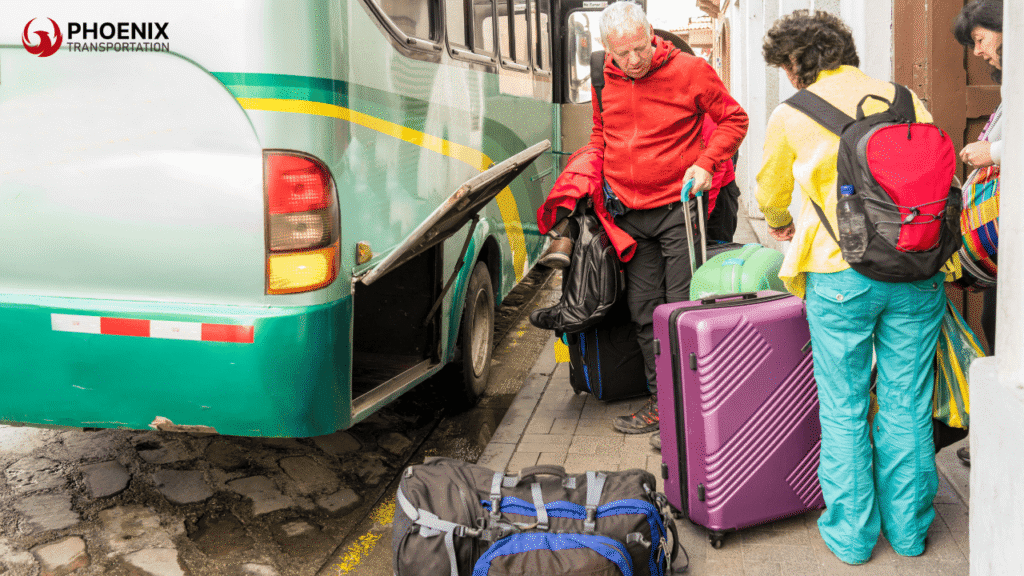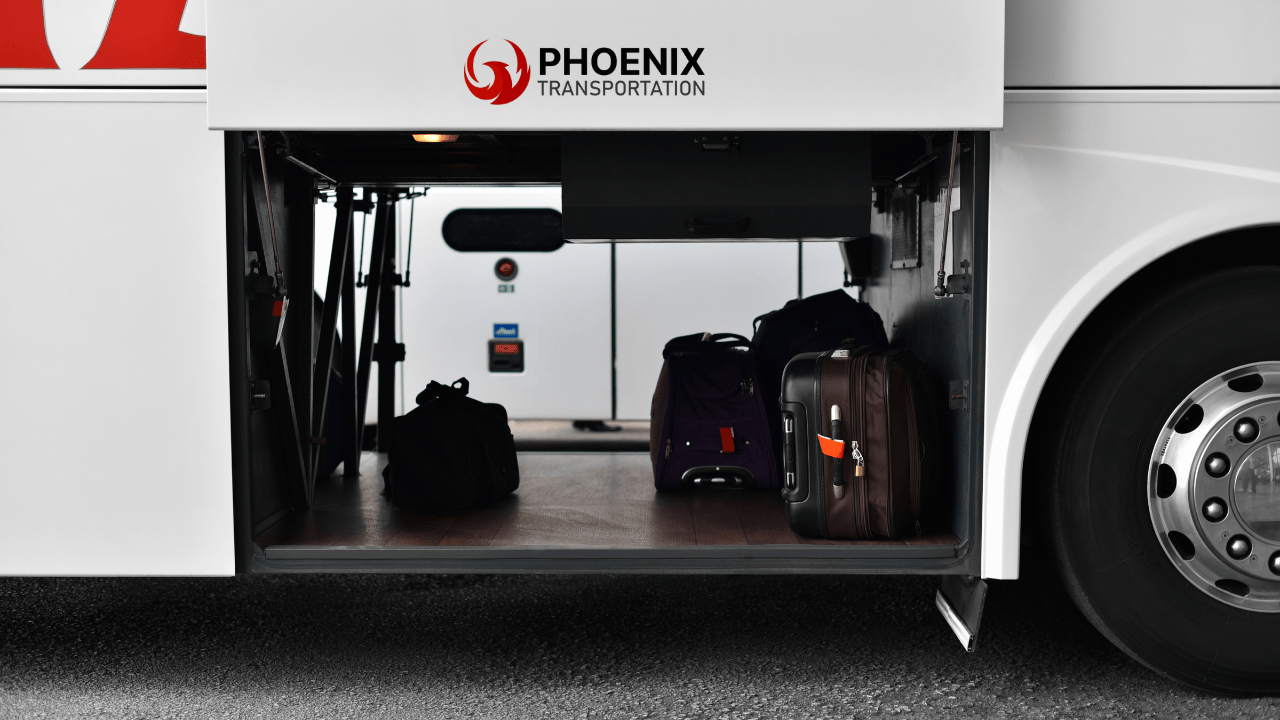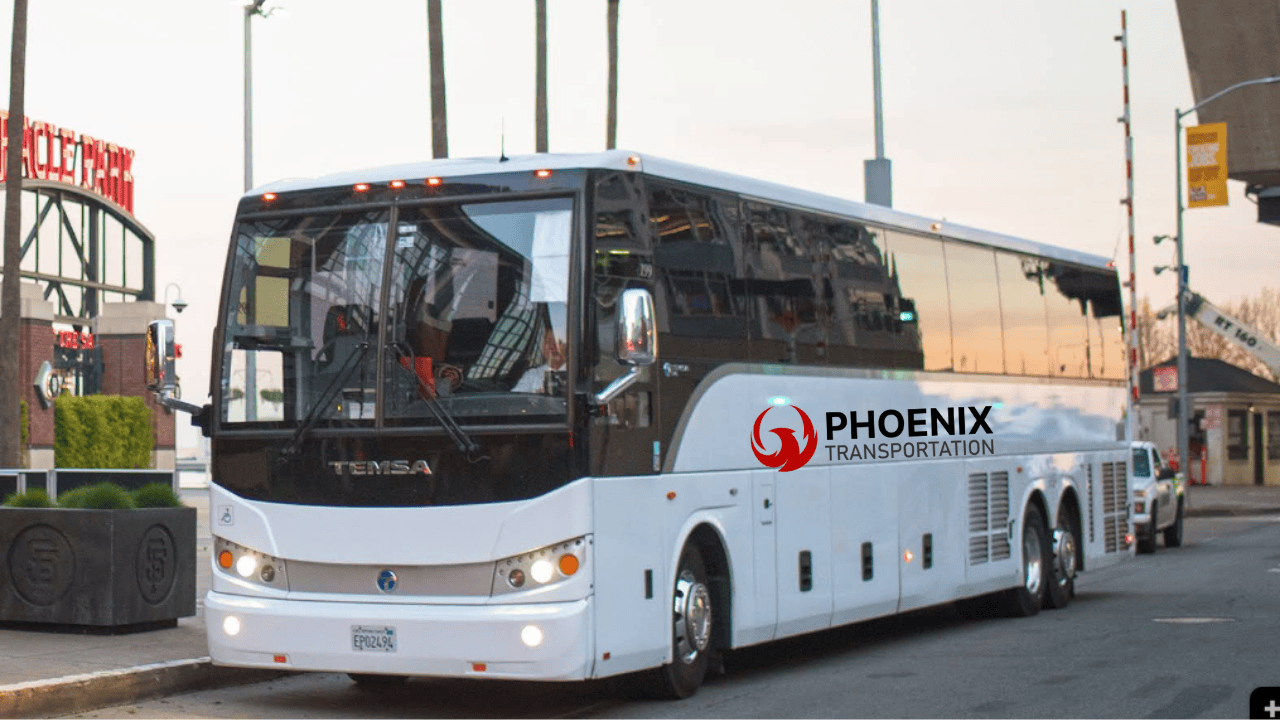Use soft-sided bags, roll clothes tightly, and pack only essentials to maximize bus luggage space. Share items when possible and avoid bulky suitcases. Label your bags clearly for easy identification and quicker loading.
Key Takeaways:
- Use soft, flexible luggage.
- Roll clothes to save space.
- Pack only essentials.
- Share items when possible.
- Label bags for efficiency.
When it comes to group travel, efficient packing plays a crucial role in ensuring a smooth and stress-free journey. At Phoenix Transportation San Francisco, we prioritize comfort, convenience, and spatial optimization. In this comprehensive guide, we outline the most effective strategies for maximizing bus luggage space without compromising on passenger comfort. Whether you’re organizing a corporate retreat, a school trip, or a family reunion, these packing tips will ensure that every inch of storage is utilized to its fullest potential.
Understanding the Dimensions of SF Charter Bus Storage Compartments
Before packing begins, it is vital to understand the available luggage compartment dimensions. Phoenix Transportation’s fleet typically includes under-carriage luggage bays and overhead interior bins.
- Under-Carriage Luggage Compartments: Ideal for larger suitcases, duffels, equipment bags, and boxed materials.
- Overhead Bins: Best suited for personal items such as backpacks, purses, light jackets, and electronics.
Knowing the layout and limitations of these compartments helps prevent overpacking and last-minute reshuffling.
Use Standardized Luggage Sizes
Using a mix of bag sizes leads to inefficient use of space. Instead, opt for uniform luggage dimensions, such as 22” rolling carry-ons or medium-sized duffels. Standardized luggage makes stacking and organizing far more efficient, as it reduces awkward gaps and wasted corners.
Roll, Don’t Fold: Smart Packing Techniques
Encourage passengers to roll their clothes rather than fold. This simple switch has significant benefits:
- Saves Space: Rolled clothing takes up less volume.
- Reduces Wrinkles: Rolling minimizes creasing during travel.
- Improves Visibility: It’s easier to identify clothing at a glance.
For optimal efficiency, use packing cubes, which group like-items together and make it easy to compress contents inside the bag.
Minimize Redundancy in Group Packing
Group travelers often overpack by duplicating shared items. When planning for groups, designate shared essentials:
- One set of toiletries per room or family
- Shared electronics (power strips, chargers, adapters)
- Communal first-aid kits
Assigning these responsibilities ahead of time ensures that no one overpacks, and every item serves a purpose. For essentials like first-aid, refer to the CDC’s recommended travel health packing list to cover all safety bases.
Use Stackable, Soft-Sided Bags
Hard-shell luggage can be sturdy but is often inflexible when stacking. Instead, opt for soft-sided, stackable duffel bags that can be compressed and arranged tightly together. Soft bags also conform better to the contours of the luggage bay, allowing better use of irregular spaces.
Label All Luggage Clearly
Clear labels help with quick identification and retrieval, reducing time spent during loading and unloading. Each bag should have:
- Name
- Group/Organization name
- Contact number
Use color-coded tags for additional visual sorting, especially useful for large groups with multiple stops.
Separate Essentials in Personal Bags

Each passenger should carry a personal essentials bag with items they may need on board:
- Medications
- Snacks
- Identification/passport
- Electronics and chargers
- Light clothing layers
This minimizes the need to access the main luggage compartments mid-journey, ensuring streamlined travel flow.
Utilize Vertical Space Efficiently
When loading the under-carriage compartments, pack vertically instead of flat. This allows:
- Maximized stacking without squashing
- Easier weight distribution
- Increased compartment capacity
Group similar-sized bags together and pack them snugly to avoid shifting during transport.
Reserve Critical Gear for Easy Access
If your group includes gear such as musical instruments, athletic equipment, or presentation tools, designate one compartment as an “easy-access bay.” This ensures important items can be retrieved quickly without unpacking the entire bus.
Avoid Overpacking – Weight Matters
While optimizing space is important, so is weight distribution. Buses have weight limits per axle, and overpacking can cause safety issues or regulatory delays. Stick to the suggested luggage weight per passenger (typically 50 lbs or less).
Encourage travelers to:
- Pack only what they need
- Eliminate unnecessary shoes or heavy items
- Transfer heavier items to checked compartments only
Pre-Sort and Load by Destination
For multi-stop trips, pre-sort luggage according to the drop-off point. This eliminates unnecessary shuffling and allows for:
- Faster unloading
- Improved organization
- Reduced stress during transitions
Group luggage for each stop and load in reverse order, so the first items off are the most easily accessible.
Assign a Luggage Coordinator
A designated luggage coordinator or packing supervisor helps ensure efficient packing. Their responsibilities should include:
- Checking bag dimensions and weight
- Organizing the sequence of loading
- Verifying that compartments are securely closed
- Communicating with drivers and passengers
A single point of oversight avoids miscommunication and reduces last-minute confusion.
Use Vacuum-Sealed Bags for Bulky Items
For trips that involve colder climates or require heavy clothing, vacuum-sealed compression bags can drastically reduce the volume of sweaters, jackets, or blankets. This is especially helpful when:
- Traveling in winter
- Carrying camping or hiking gear
- Packing for long-duration trips
These bags maximize space inside the luggage itself, freeing up more room in the bus compartments.
Consider Renting a Trailer for Extra Equipment
If your group has oversized or excess gear, consider renting a towable luggage trailer from Phoenix Transportation. This helps keep the main luggage area clutter-free and safe, while offering extra storage for:
- Tents and camping gear
- Bicycles or sports gear
- Promotional event materials
This strategy ensures comfort inside the bus cabin while managing bulky items with ease.
Perform a Final Walkthrough Before Departure
Before hitting the road, conduct a luggage inventory and compartment check:
- Confirm that all bags are accounted for
- Ensure overhead bins are closed and secure
- Double-check under-carriage latches
- Inspect for forgotten items at the loading point
This final step minimizes the risk of lost luggage and guarantees a smooth departure.
Conclusion: Smart Packing Means Stress-Free Travel
Optimizing bus luggage space is not just about fitting more into tight spaces—it’s about creating a safer, more comfortable, and efficient group travel experience. By following these expert packing strategies, Phoenix Transportation San Francisco ensures that your trip begins and ends on the right note. Remember, the key lies in planning ahead, packing smart, and communicating clearly with all travelers.



